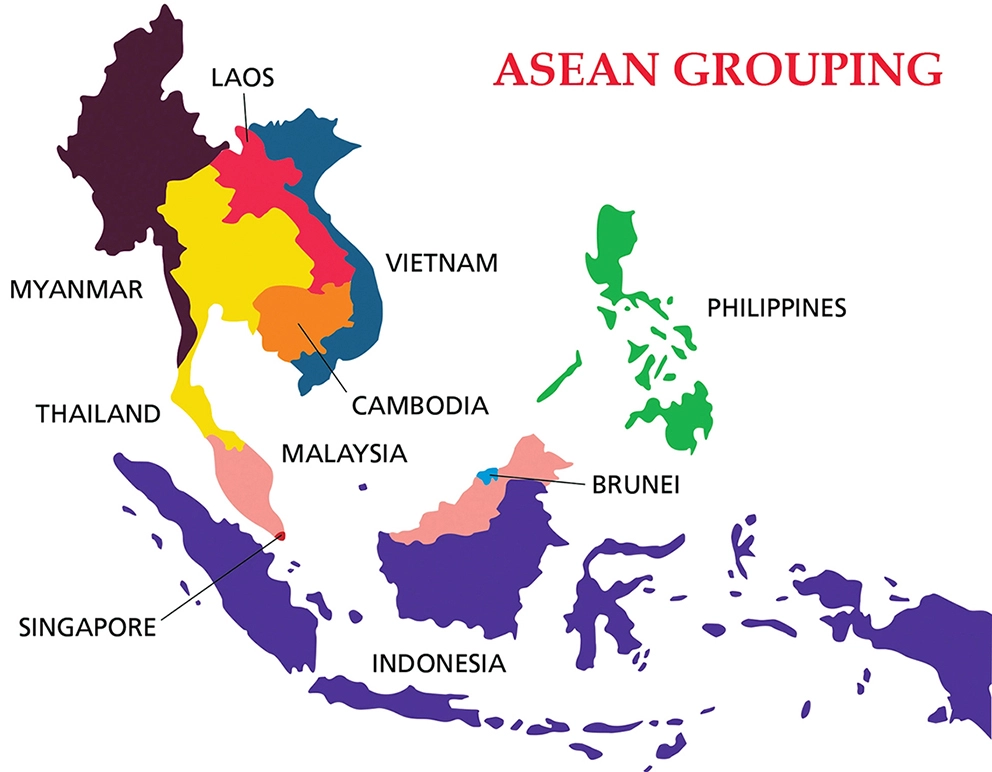International Relations
ASEAN-India Economic Ministers’ Meeting
- 19 Sep 2022
- 7 min read
For Prelims: ASEAN, Act East Policy
For Mains: Significance of ASEAN for India, India-ASEAN Areas of Cooperation
Why in News?
Recently, India and Cambodia co-chaired the 19th ASEAN-India Economic Ministers’ meeting in Cambodia.
- The Economic Ministers or their representatives from all the 10 ASEAN countries attended the meeting.
What are the Highlights of the Meeting?
- Noted Economic Relations:
- The Ministers noted that trade and economic relations between ASEAN and India are starting to recover from the impact of the Covid-19 pandemic and the two-way trade between ASEAN and India reached USD 91.5 billion in 2021 increasing by 39.2% year-on-year.
- ASEAN India Business Council:
- The Ministers also took note of the recommendations made by ASEAN India Business Council (AIBC) to enhance the ASEAN India economic partnership and the activities undertaken by AIBC in 2022.
- ASEAN India-Business Council (AIBC) was set up in March 2003 as a forum to bring key private sector players from India and the ASEAN countries on a single platform for business networking and sharing of ideas.
- The Ministers also took note of the recommendations made by ASEAN India Business Council (AIBC) to enhance the ASEAN India economic partnership and the activities undertaken by AIBC in 2022.
- Post Covid-19 Recovery:
- Ministers reaffirmed their commitment to take collective actions to mitigate the economic impact of the pandemic and work towards a sustainable post-Covid-19 recovery.
- Supply Chain Connectivity:
- The Ministers welcomed ASEAN and India to forge collective actions in securing a robust supply chain connectivity to maintain the flow of essential goods and services through ASEAN-India Trade in Goods Agreement (AITIGA) Upgrade Negotiations, mutual recognition of Covid-19 vaccination, vaccines production, public health surveillance, and medical technologies.
- ASEAN India Trade in Goods Agreement:
- The Ministers endorsed the Scope of the Review of the AITIGA to make it more user-friendly, simple, and trade facilitative for businesses, as well as responsive to the current global and regional challenges including supply chain disruptions.
- The Ministers also activated the AITIGA Joint Committee to undertake the review of AITIGA expeditiously.
What is the Association of Southeast Asian Nations?
- About:
- It is a regional grouping that promotes economic, political, and security cooperation.
- It was established in August 1967 in Bangkok, Thailand with the signing of the ASEAN Declaration (Bangkok Declaration) by the founding fathers of ASEAN, namely Indonesia, Malaysia, Philippines, Singapore and Thailand.
- Its chairmanship rotates annually, based on the alphabetical order of the English names of Member States.
- ASEAN countries have a total population of 650 million people and a combined Gross Domestic Product (GDP) of USD 2.8 trillion.
- Commodity trade between India and ASEAN region has reached 98.39 billion in the period April 2021- February 2022.India’s main trading ties are with Indonesia, Singapore, Malaysia, Vietnam and Thailand.
- Members:
- ASEAN brings together ten Southeast Asian states – Brunei, Cambodia, Indonesia, Laos, Malaysia, Myanmar, the Philippines, Singapore, Thailand and Vietnam – into one organisation.
UPSC Civil Services Examination Previous Year Question (PYQ)
Prelims
Q1. Consider the following countries: (2018)
- Australia
- Canada
- China
- India
- Japan
- USA
Which of the above are among the ‘free-trade partners’ of ASEAN?
(a) 1, 2, 4 and 5
(b) 3, 4, 5 and 6
(c) 1, 3, 4 and 5
(d) 2, 3, 4 and 6
Ans: (c)
Exp:
- Association of Southeast Asian Nations (ASEAN) has free trade agreements with six partners, namely the People’s Republic of China, Republic of Korea, Japan, India as well as Australia and New Zealand. Hence, 1, 3, 4 and 5 are correct.
- Therefore, option (c) is the correct answer.
Q2. The term ‘Regional Comprehensive Economic Partnership’ often appears in the news in the context of the affairs of a group of countries known as (2016)
(a) G20
(b) ASEAN
(c) SCO
(d) SAARC
Ans: (b)
Exp:
- Regional Comprehensive Economic Partnership (RCEP) is a Free Trade Agreement (FTA) between the ten member states of the Association of Southeast Asian Nations (ASEAN) and the five countries (Australia, China, Japan, South Korea and New Zealand) with which ASEAN has existing FTAs.
- Therefore, option (b) is the correct answer.
Q3. In the Mekong-Ganga Cooperation, an initiative of six countries, which of the following is/are not a participant/ participants? (2015)
- Bangladesh
- Cambodia
- China
- Myanmar
- Thailand
Select the correct answer using the code given below:
(a) 1 only
(b) 2, 3 and 4
(c) 1 and 3
(d) 1, 2 and 5
Ans: (c)
Exp:
- The Mekong-Ganga Cooperation (MGC) is an initiative by six countries – India and five ASEAN countries, namely, Cambodia, Lao PDR, Myanmar, Thailand and Vietnam for cooperation in tourism, culture, education, as well as transport and communications. It was launched in 2000 in Vientiane, Lao PDR.
- Both the Ganga and the Mekong are civilizational rivers and the MGC initiative aims to facilitate closer contacts among the people inhabiting these two major river basins.
- The MGC is also indicative of the cultural and commercial linkages among the member countries of the MGC down the centuries.
- Therefore, option (c) is the correct answer.
Mains
Q. Evaluate the economic and strategic dimensions of India’s Look East Policy in the context of the post Cold War international scenario. (2016)





